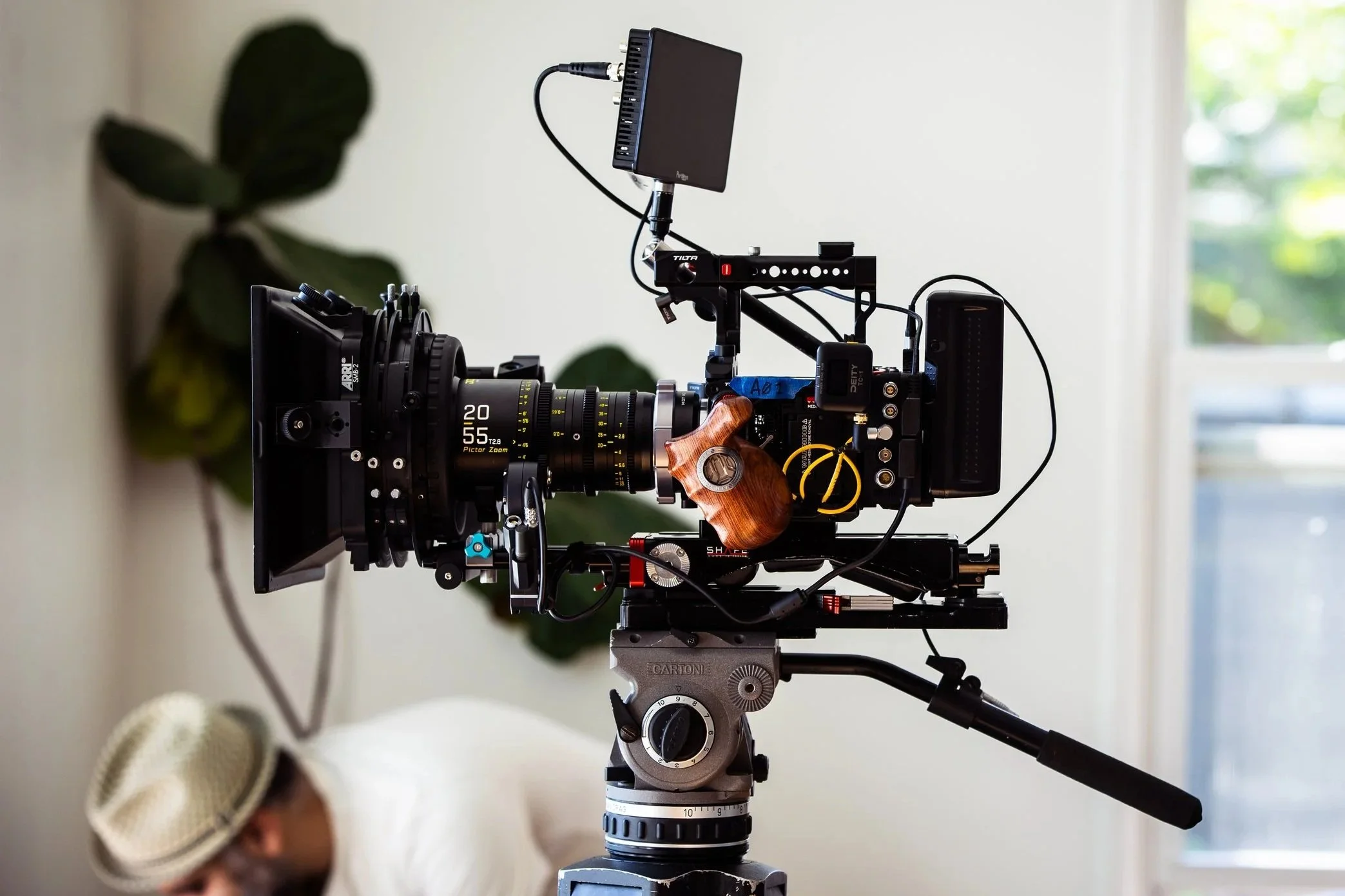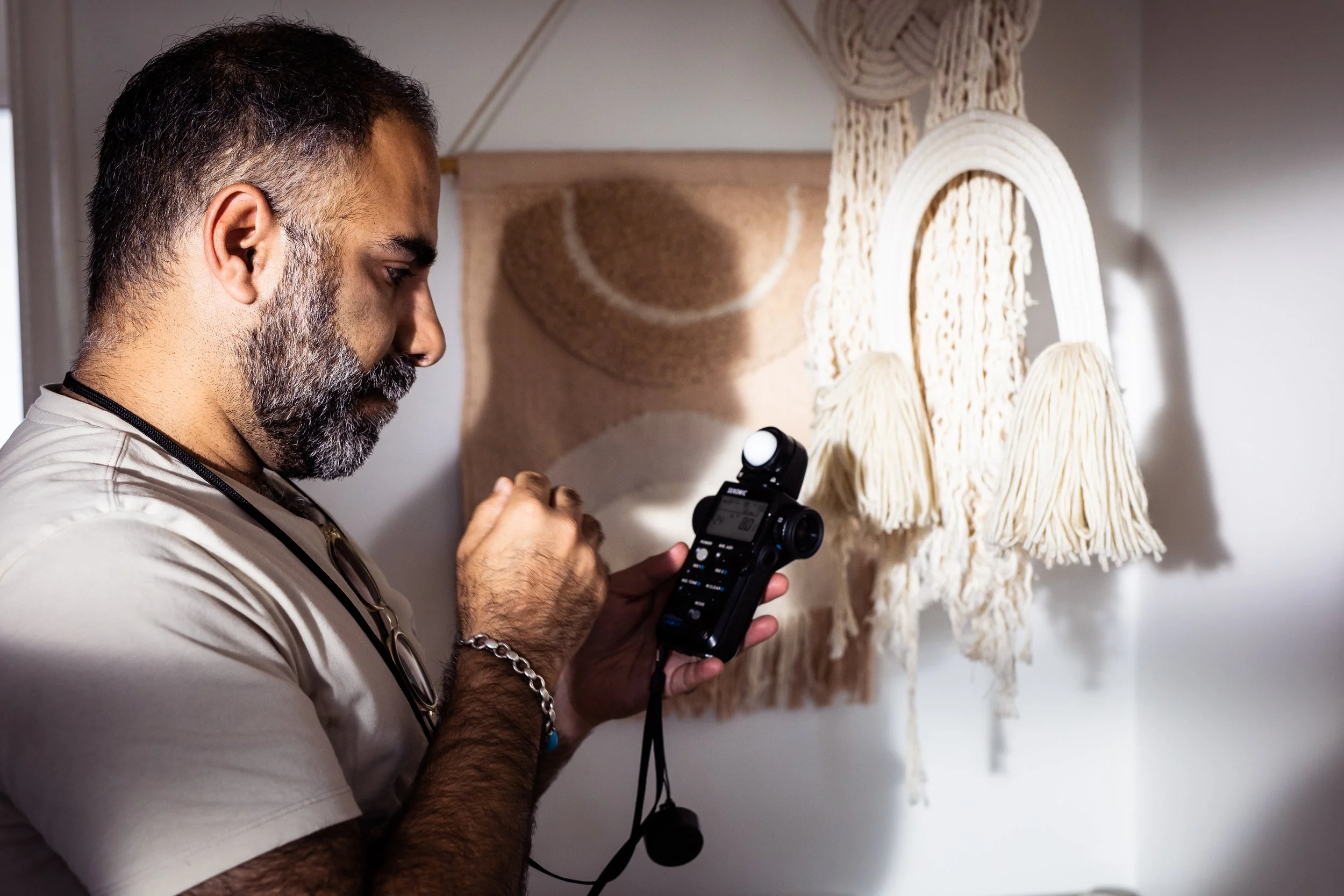How to Film for Vertical and Horizontal Content
In today’s digital world, vertical video is no longer optional, it’s essential. Platforms like Instagram Reels, TikTok, and YouTube Shorts have shifted how audiences consume content, and brands need to adapt. But while the format has changed, one thing hasn’t: story still matters.
At Parthenon Pictures, we’ve seen firsthand how easy it is to get caught up in trends and forget the fundamentals. Shooting vertically is more than just turning the camera on its side. It’s about being strategic on set with framing, blocking, and designing your production with the vertical format in mind, while still honoring the story you’re telling.
This RED Komodo X with DZO lenses is optimized for both horizontal and vertical filming.
The Tiny Traveler Campaign: Filming for Both Worlds
When we filmed the campaign for Tiny Traveler, a baby monitor brand, we knew from day one that the deliverables had to work in both horizontal and vertical formats. That meant every shot, every scene, and every edit needed to be planned with flexibility in mind.
Instead of treating vertical as an afterthought, we approached it as the hero format. While we captured wides for traditional deliverables, we also framed intentionally for vertical, anticipating how each moment would play on a phone screen.
From that shoot, we created short-form ads optimized for social media. It wasn’t just a crop job. It was a cinematic, story-driven bite size shorts for the way people actually watch content today. But the real challenge, and opportunity, came in the edit. We crafted those moments together into a 60-second hero commercial designed specifically for traditional horizontal viewing. The reason we were able to successfully marry the two formats, what a true understanding of the emotional throughline, and lots and lots of prep.
Vertical or not, the rules of cinematography still apply.
Why Story Still Matters
Here’s the truth: flashy visuals and quick edits might stop someone mid-scroll, but story is what makes them remember you. That’s why even in a 15-second vertical ad, we focus on narrative. Who are the characters? What’s the conflict? What’s the emotional payoff?
The vertical format doesn’t limit storytelling, it sharpens it. With less space and less time, every frame has to pull its weight. And that’s where strategy on set makes all the difference.
Vertical Filmmaking Tips
If you’re planning a campaign that will live online, here are a few lessons we’ve learned at Parthenon Pictures:
Shoot for both formats. Don’t just crop your wides but compose shots that work vertically from the start.
Think in short arcs. Even a 15-second ad needs a beginning, middle, and end.
Design for the scroll. The first 3 seconds matter most. Hook your audience fast.
Stay authentic. Whether it’s a commercial or a branded doc, people connect with real emotion, not just clever edits.
Plan in pre-production. Talk about vertical deliverables before you ever roll camera. It will save time and elevate the final product.
The Future Is Vertical
We’re living in a time where content has to be both cinematic and scrollable, short-form and story-driven. That balance is where Parthenon Pictures thrives. Whether it’s commercials, branded documentaries, or integrated campaigns, we create content that works across platforms without sacrificing story.
Because even in a vertical world, story comes first.


